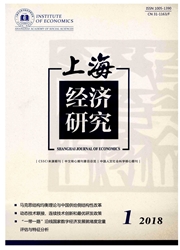

 中文摘要:
中文摘要:
随着中国发展水平的提高,居民收入分配格局不断变化。针对居民收入差距的不断扩大的现实,中产阶层的概念在经济理论和政策研究中被广泛地使用。本文在明确界定上产、中产、下产三个阶层概念的前提下,通过对统计年鉴基础数据进行有效整合,测度出中国发展水平在人均GDP介于1000~10000美元各发展阶段的上、中、下三个阶层和中国31个省、市、自治区三个阶层的格局结构。进而采用典型样本,刻画出中国居民收入分配动态格局,总结得出其演化路径和变动规律。最后通过计量方法讨论了发展水平和城镇化水平对中产阶层人口比重的影响关系,并提出以加速城镇化作为扩大中产阶层人口比重的政策主张。
 英文摘要:
英文摘要:
As the Chinese development level improves, the distribution pattern of Chinese residents' income changes gradually. Whit the fact of Chinese income gap expanding, the concept of middle class has been widely used both in theoretical and practical studies in economics. This paper, under the premise concept of higher, middle and lower class, through rebuilding and integrating innovatively the basic data in the Statistical Yearbook, measures out the weight on higher, middle and lower class both on Chinese residents'Income when GDP per people is in the range 1000 - 10000 U.S. dollars and on 31 provinces, municipalities and autonomous regions. What's more, with the help of two typical samples, we sum up its evolutionary path and change law. At last, through testing the influence relationship of level of income and urbanization moderate degree on the middle - class weight, we propose a series of policies and measures expanding the proportion of middle - class.
 同期刊论文项目
同期刊论文项目
 同项目期刊论文
同项目期刊论文
 期刊信息
期刊信息
